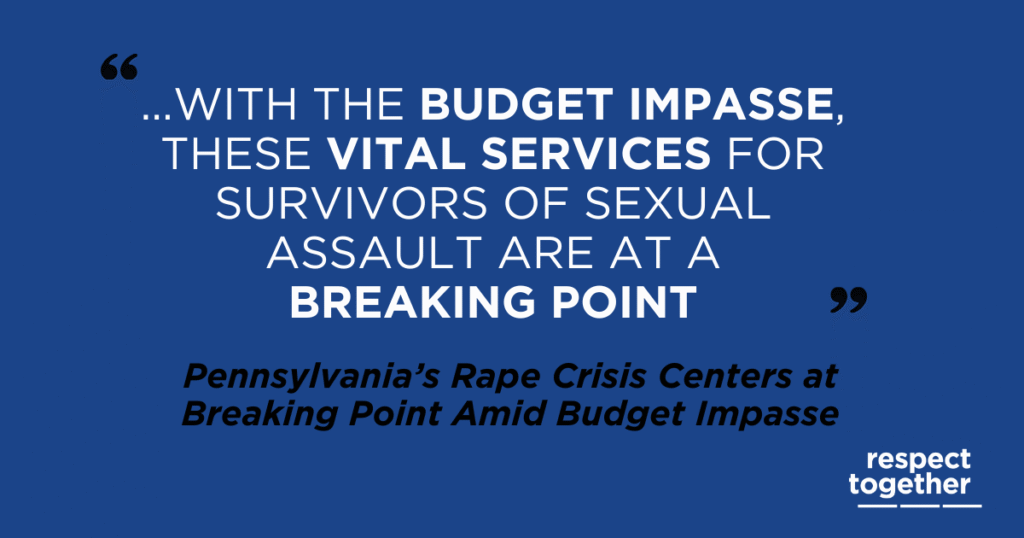We are now
Respect
Together
United to end sexual abuse,
assault, and harassment
Collectively, we are working together to create a culture in the United States – and beyond – that values and upholds all people being treated with respect and free from all forms of sexual violence and oppression.
Latest News
See the latest news from Respect Together and our divisions.
Emergency fund will provide critical financial support to ensure survivors...
The state budget impasse is putting Pennsylvania’s rape crisis centers...

Centers are taking on debt, cutting programs, and laying off...

